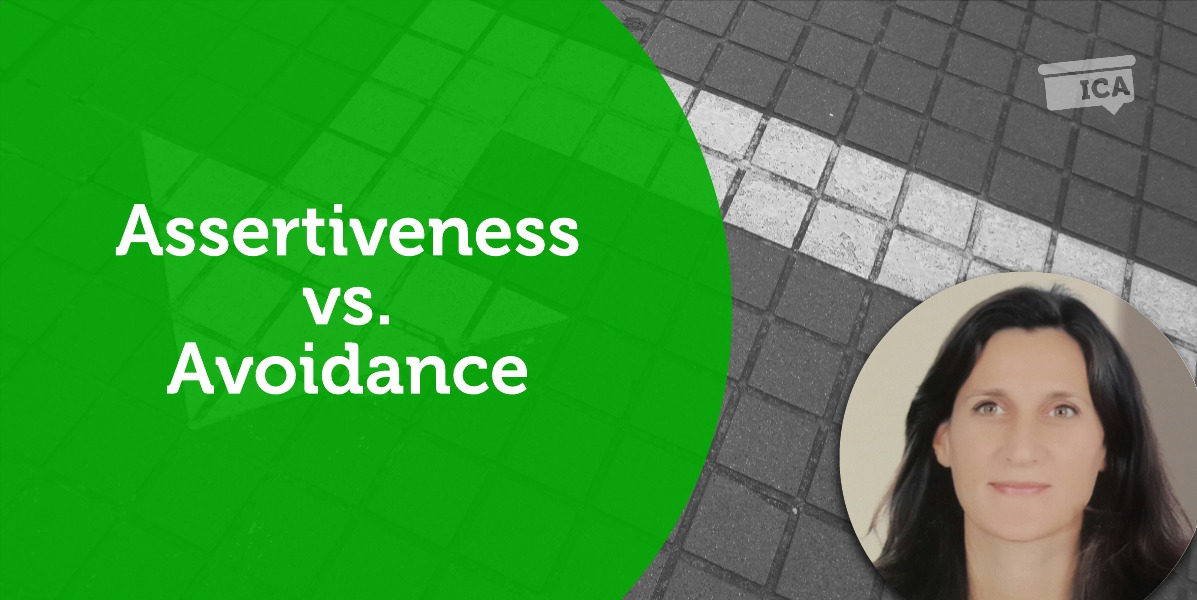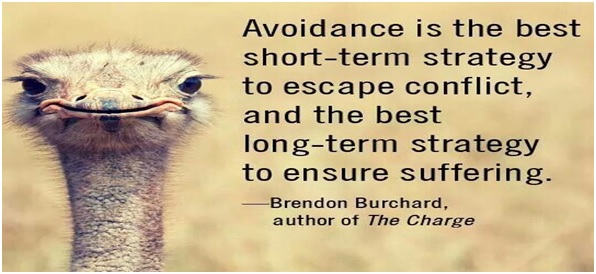
A Coaching Power Tool Created by Johaina Samaha
(Transformational Coach, FRANCE)
We would worry less about what others think of us if we realized how seldom they do. Ethel Barrett
Since I was a child, I always believed I had to please others because otherwise, I would not have friends, I would not be valued at work, or my partner would think I always complain, never happy and content … I didn’t want to have anybody in dispute, I hated it.
So I used to dissimulate my emotions, desires, thoughts, and opinions. Sometimes I even felt guilty about something or someone I was doing or talking about. For a long time, this has driven me to suppress my feelings or thoughts.
And I can see this shame in the attitude of my son: whenever we go to a restaurant, for example, he always begs me not to express my opinion about the food or the service. It makes him feel embarrassed and he fears the waiter’s reaction to my comment…
Was this something I inherited from my parents? Is that cultural? Is it from my religion? I don’t really know, but I see it in a lot of people, especially women, now that I am aware of it. Most often, learning to say what we feel or think is seen as guilt or entering a state of confrontation. I even heard one of my clients telling me that she is maybe bipolar because she is someone at work and someone else at home. Another client thinks that guilt is what has driven her behavior at home whereas at work she was seen as a role model.
Based on my own experience (personal and as a coach), I wanted to understand better how to deal with avoidance and shame and how to communicate one’s thoughts or feelings without being hostile or inconsistent. In other words: to learn to be assertive.
So first let’s first talk about avoidance

Avoidance refers to any action designed to prevent the occurrence of an uncomfortable emotion such as fear, sadness, or shame.
When we are trying to avoid tackling something head-on or trying to avoid thoughts or feelings that make us uncomfortable, we are having an avoiding behavior. This can lead to procrastination, passive-aggressiveness, and rumination.
The main reasons why we do not share our feelings or opinions from my perspective are as follows:
Some people believe that by definition they are either passive or aggressive, in other words, that they were born with certain characteristics and that they can do little to modify their communication style. This is almost always an unstated assumption, as everyone can learn to be more assertive, even if their natural tendencies are passive or aggressive.
What is Assertiveness?
Our ultimate freedom is the right and power to decide how anybody or anything outside ourselves will affect us. ― Stephen R. Covey
Dorland’s Medical Dictionary defines assertiveness as:
a form of behavior characterized by a confident declaration or affirmation of a statement without need of proof; this affirms the person’s rights or point of view without either aggressively threatening the rights of another (assuming a position of dominance) or submissively permitting another to ignore or deny one’s rights or point of view.
Being assertive means respecting yourself and other people; seeing people as equal to you, not better than you or less important than you. The goal of assertive behavior is to stand up for your rights in such a way that you do not violate another person’s rights. It is achieved through open, direct and honest communication while valuing respecting and listening to others.
The common barriers to assertiveness are:
Direct communication style is one of the most important skills to learn if someone is willing to become more assertive. Indeed, direct communicators say what they mean and say it clearly, there is no hesitation with the word ‘No” and no holding back on sharing opinions and feedback. They speak with conviction and they are likely to be succinct and to the point.
Coaching application:
It may take time and effort to learn to become more assertive, yet it is not impossible. What is needed?
-
Identify our needs and wants
You have to know what you want before you can express it directly and clearly. Give yourself permission to have and identify your feelings, thoughts, needs and wants. It is often the uncomfortable emotions and thoughts that can help you determine what you need and want in a relationship.
-
Learning to say ‘no’
Consider using the following format for holding a difficult conversation:
-
Recognize when you’re doing it
Take a minute to think of common times you tend to use avoidance coping. Do you procrastinate? Do you avoid discussing problems or facing issues? Make a note of these times, and make it a point to notice when you avoid things in the future. This is a vital step in stopping yourself and replacing your habits with more effective ones.
-
Find out with who you are assertive with Assertiveness wheel
The Assertiveness Wheel is a useful tool when trying to understand why you feel able to be assertive in certain situations and not in others.
The wheel provides an opportunity to look at the different roles you play and consider how assertive you are in them. You identify key relationships and grade them on a scale of 0 – 10 (10 indicating that you are fully assertive in that relationship, and 0 indicating that you are non-assertive or aggressive).
Think about the different roles in your life, for example, a direct report, a boss, a father/mother, a daughter/son, a friend, a member of your community.
On the wheel below, label each spoke with the different roles you play in your life. Then consider how assertive your behavior is in each of these roles on a scale of 0 – 10 (0 being non-assertive or aggressive, and 10 being assertive).
Mark your score at the appropriate place on the spokes with an X. Then connect all the X by drawing a line between each one to create your own assertiveness wheel.
The Assertiveness Wheel

References:
https://www.skillsyouneed.com/ps/assertiveness.html
https://www.skillsyouneed.com/ps/self-control.html
https://www.verywellmind.com/ptsd-and-emotional-avoidance-2797640
https://en.wikipedia.org/wiki/Assertiveness